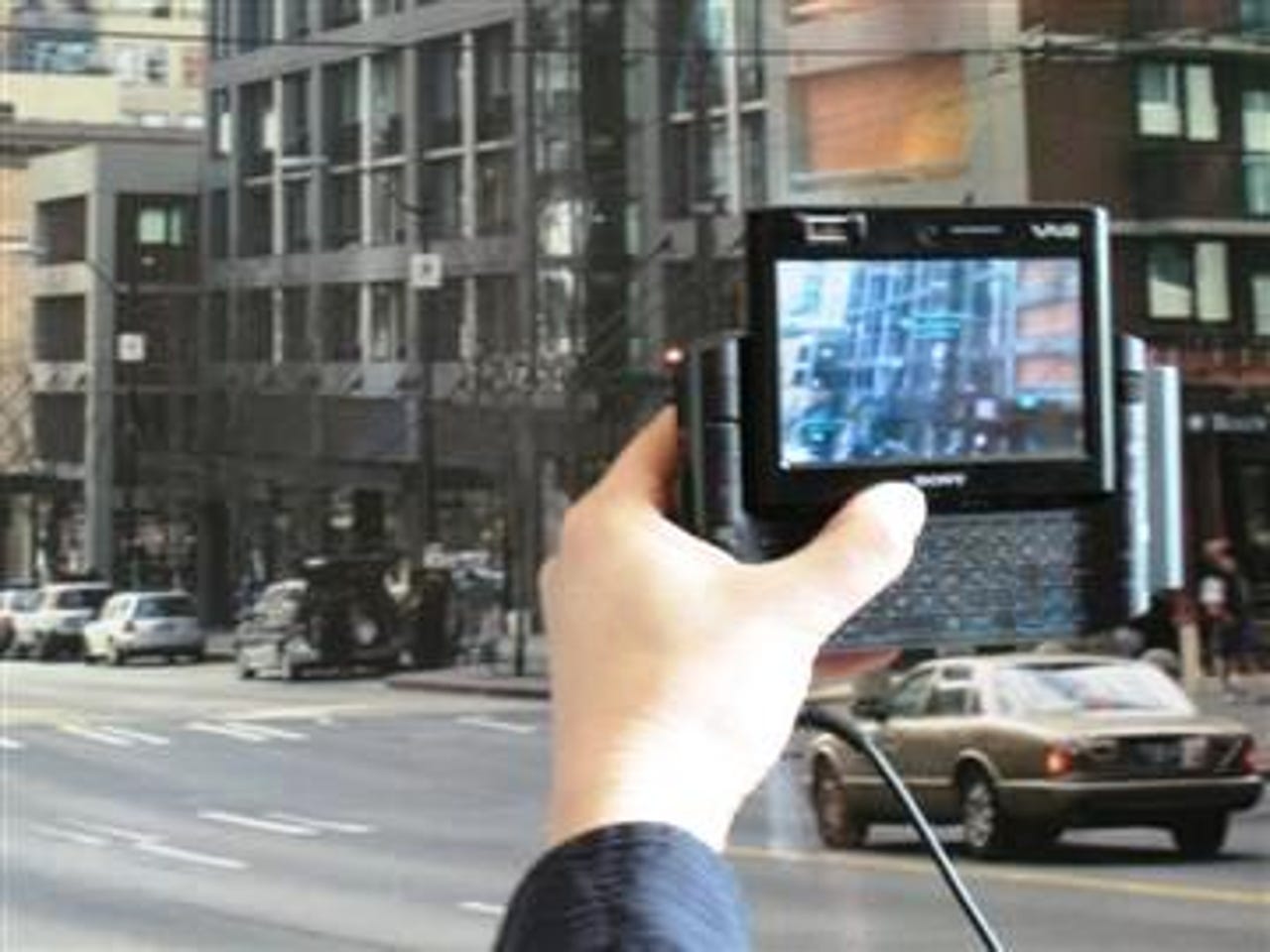Gallery: What's brewing inside Microsoft Research?


The picture above shows technology from the Core Tools for Augmented Reality project which is aimed at adding visual information to real-world surroundings.
The screen on the camera shows information about the building that it's facing such as its address and the businesses that are inside.
But ZDNet UK's Rupert Goodwins questions whether the money for Microsoft research is being well spent - and ZDNet's Larry Dignan provides analysis.
Photo credit: Tim Ferguson/silicon.com
The user follows the direction of the bubbles' movements with the camera in order to locate a virtual treasure chest located nearby.
Photo credit: Tim Ferguson/silicon.com
Here you can see a photo of the night sky on the surface of the screen while a piece of transparent plastic on top of the screen overlays the Orion constellation on the image below.
Photo credit: Tim Ferguson/silicon.com
The light which makes up the image from the other projector passes through the diffused material and is then captured by items placed above the actual surface of the device.
This allows the standard Microsoft Surface functionality but adds more ways in which you can interact with the information above the actual screen.
Photo credit: Tim Ferguson/silicon.com
Photo credit: Tim Ferguson/silicon.com
Photo credit: Tim Ferguson/silicon.com
Photo credit: Tim Ferguson/silicon.com
Photo credit: Tim Ferguson/silicon.com
Photo credit: Tim Ferguson/silicon.com
Each person has a specific area represented by pictures on this screen. They can leave messages and upload pictures to their profile and people can then respond to them with messages written on photos using the touchscreen.
The idea is for the screen to be placed in a public area in an office so people can keep track and interact with each other whether they're in the office or out and about.
Photo credit: Tim Ferguson/silicon.com
The clock is divided into work, school and home zones and when a person moves out of a location into another their mobile phone will update their location via an automated SMS message sent to the device.
Users can also text information about what they are doing which appears next to their picture on the screen.
Photo credit: Tim Ferguson/silicon.com
Using a touchscreen, users can access messages that have been pushed to the application via a mobile phone or email outside the home.
Photo credit: Tim Ferguson/silicon.com
At the bottom of the screen is a box labelled with a particular holiday. The user has "tipped" the box over using the touchscreen, spilling the photos onto the surface. They can then look through the photos and enlarge them to get a better look.
The idea is for people to be able to explore their pictures in a more interactive way rather than going through files on a PC.
Photo credit: Tim Ferguson/silicon.com
Photo credit: Tim Ferguson/silicon.com
Photo credit: Tim Ferguson/silicon.com
The touchscreen devices allow users to write and send messages and photos to other users. You can also draw pictures, play games and take pictures. They have been trialled in 24 households in the UK.
Photo credit: Tim Ferguson/silicon.com
It shows when people are downloading and restricting other users as a result. It then allows the controller to throttle back available broadband for people who are taking bandwidth from other users.
Photo credit: Tim Ferguson/silicon.com
This image shows the links between senators in the US Congress. The connecting lines indicate how often votes are aligned. The cluster on the left is Republicans, while the one on the right is Democrats and independent senators.
Photo credit: Tim Ferguson/silicon.com
The project is designed to help stimulate memory for people suffering from Alzheimer's disease and other related illnesses. The technology is currently being trialled by clinicians around the world.
Photo credit: Tim Ferguson/silicon.com
The screen shows how load, latency and power use changes as the system kicks in.
Photo credit: Tim Ferguson/silicon.com
When a request is made to access data or applications on the machine from a remote location, the Somniloquy device powers up the computer for the information to be obtained. Once the task has been completed, the device powers the machine down again.
Photo credit: Tim Ferguson/silicon.com
The Antigen Presentation case study (shown here) is a collaboration between Cambridge and Southampton universities and is aimed at better understanding cancer and autoimmune disease.
Photo credit: Tim Ferguson/silicon.com